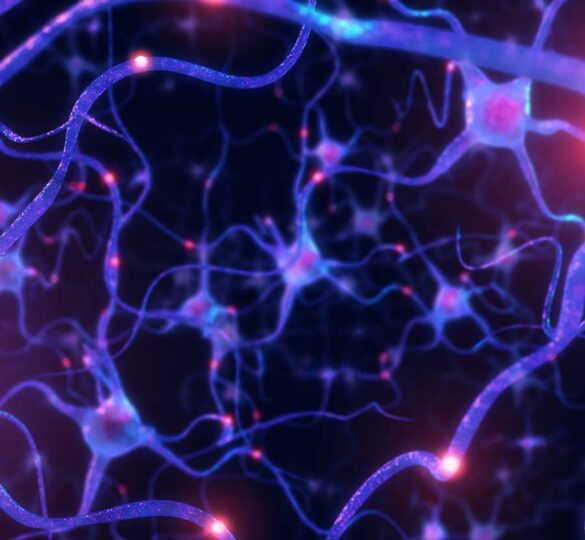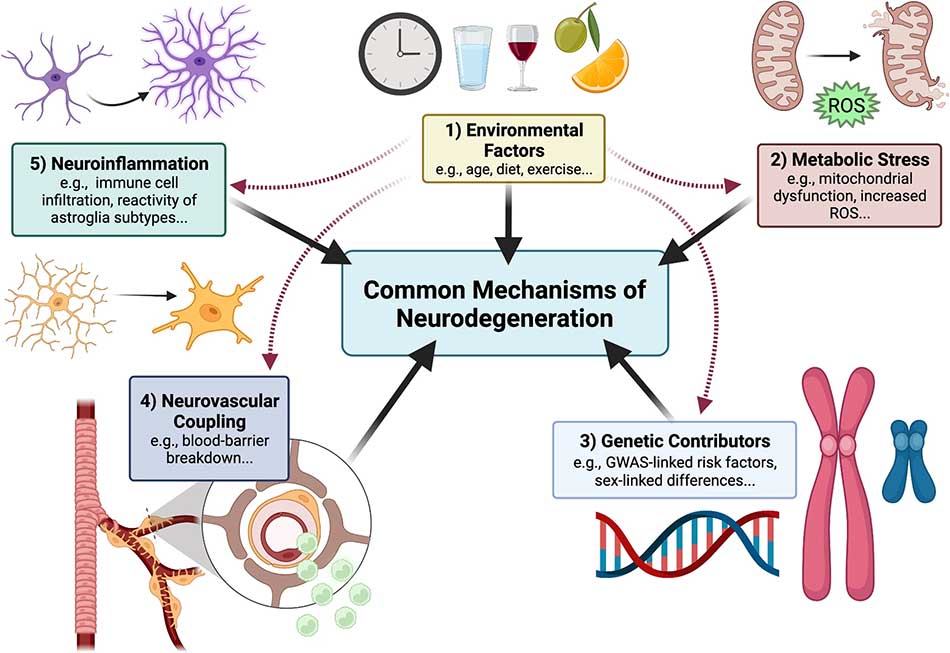“Solving Neurodegeneration” White Paper Publication Results from Innovative Research Collaboration

Research paper summarizes the most important common elements that characterize progression in neurodegeneration and hope for new therapies to help patients with these devastating diseases.
San Francisco – August 11, 2022: Glaucoma Research Foundation hosted a “think tank” style catalyst meeting in April 2021 in partnership with BrightFocus Foundation and the Melza M. and Frank Theodore Barr Foundation. The virtual meeting brought together thought leaders from across the scientific community including experts in glaucoma and Alzheimer’s disease. The findings from the meeting were recently published in Molecular Neurodegeneration and raise opportunities for new treatments and cures for neurodegenerative diseases like glaucoma and Alzheimer’s.
Currently no therapies exist that can prevent or halt neurodegeneration or regrow healthy neurons. The comprehensive report, Solving Neurodegeneration: Common Mechanisms and Strategies for New Treatments, which includes an extensive bibliography will serve as an important reference for researchers working on neurodegeneration.
Publication authors included meeting participants Shane A. Liddelow, PhD, Sally Temple, PhD, Larry I. Benowitz, PhD, Adriana Di Polo, PhD, Cheryl Wellington, PhD, Jeffrey L. Goldberg, MD, PhD, Zhigang He, PhD, Xin Duan, PhD, Guojun Bu, PhD, Albert A. Davis, MD, PhD, Karthik Shekhar, PhD, Anna La Torre, PhD, David C. Chan, MD, PhD, M. Valeria Canto-Soler, PhD, John G. Flanagan, PhD, FCOoptom, Preeti Subramanian, PhD, Sharyn Rossi, PhD, Thomas M. Brunner, Diane E. Bovenkamp, PhD, David J. Calkins, PhD, and white-paper author Lauren K. Wareham, PhD.
The objective of the Solving Neurodegeneration Catalyst Meeting was to spark new ideas and challenge the conventional wisdom by building on the leading research of each of the participating laboratories. Meeting sponsors and participants aim to identify major barriers to solving neurodegeneration and regeneration, as well as key opportunities and potential breakthrough ideas. By learning from one another, and through publication of this significant white paper, scientists across different domains of neuroscience are helping to accelerate the search for the next generation of innovative treatments and cures.
The publication’s authors summarized: “Providing patients with effective strategies to treat or prevent neurodegenerative disease is a monumental challenge that scientists and clinicians alike will increasingly face as the population ages and incidence of disease increases. Reaching these goals will rely on a greater understanding of the common pathological mechanisms across the entire spectrum of neurodegenerative diseases, which include diseases of the brain and by extension, the visual system. Focusing solely on linking molecular mechanisms to a single disease can lead to siloed thinking, inability or unwillingness to make major leaps forward in the development of advanced treatments and cures applicable to the broader scope of diseases.”
Inspired by the collaborative catalyst meeting and subsequent white paper publication, in July 2022 the Glaucoma Research Foundation launched the Melza M. and Frank Theodore Barr Foundation Catalyst for a Cure Initiative to Prevent and Cure Neurodegeneration. The research initiative is the fourth version of Glaucoma Research Foundation’s unique approach to breaking down research silos and cultivating breakthrough scientific collaboration. This initiative brings together four exciting, early-career scientists from diverse disciplines and backgrounds to pursue one of our most confounding medical challenges: how to treat, cure, and prevent diseases that, like glaucoma and Alzheimer’s, occur when key cells in the central nervous system deteriorate and die. By deploying multidisciplinary, collaborative, integrative research strategies — and thinking across diseases — the initiative aims to deliver new knowledge to address all neurodegenerative conditions.

Posted on August 11, 2022